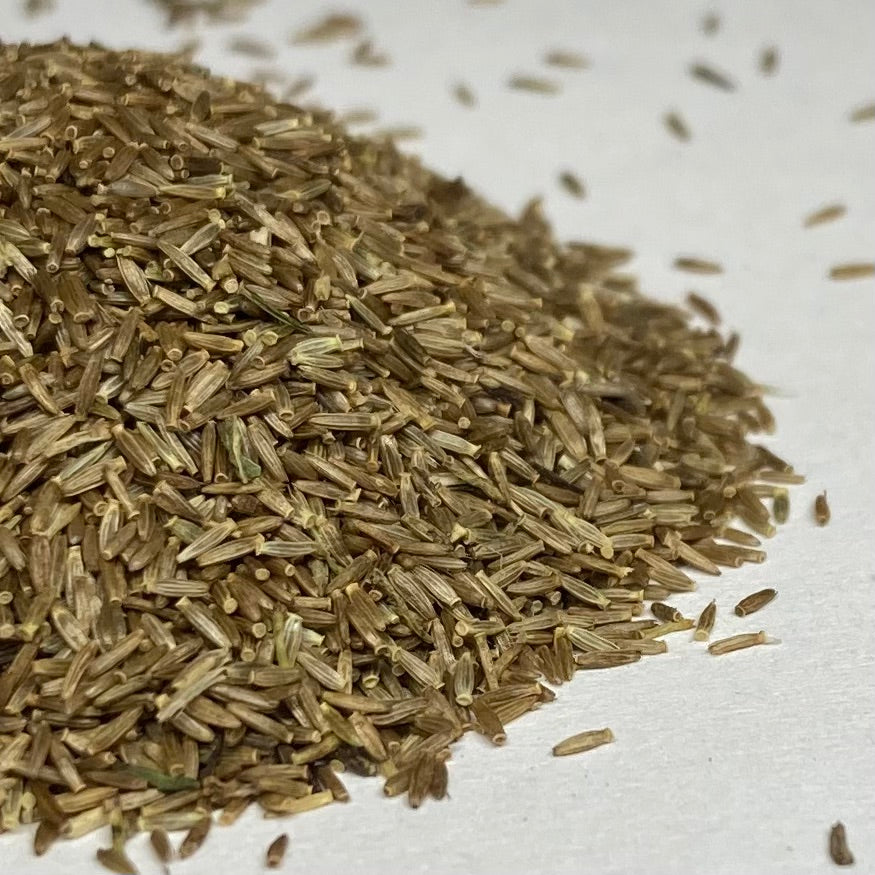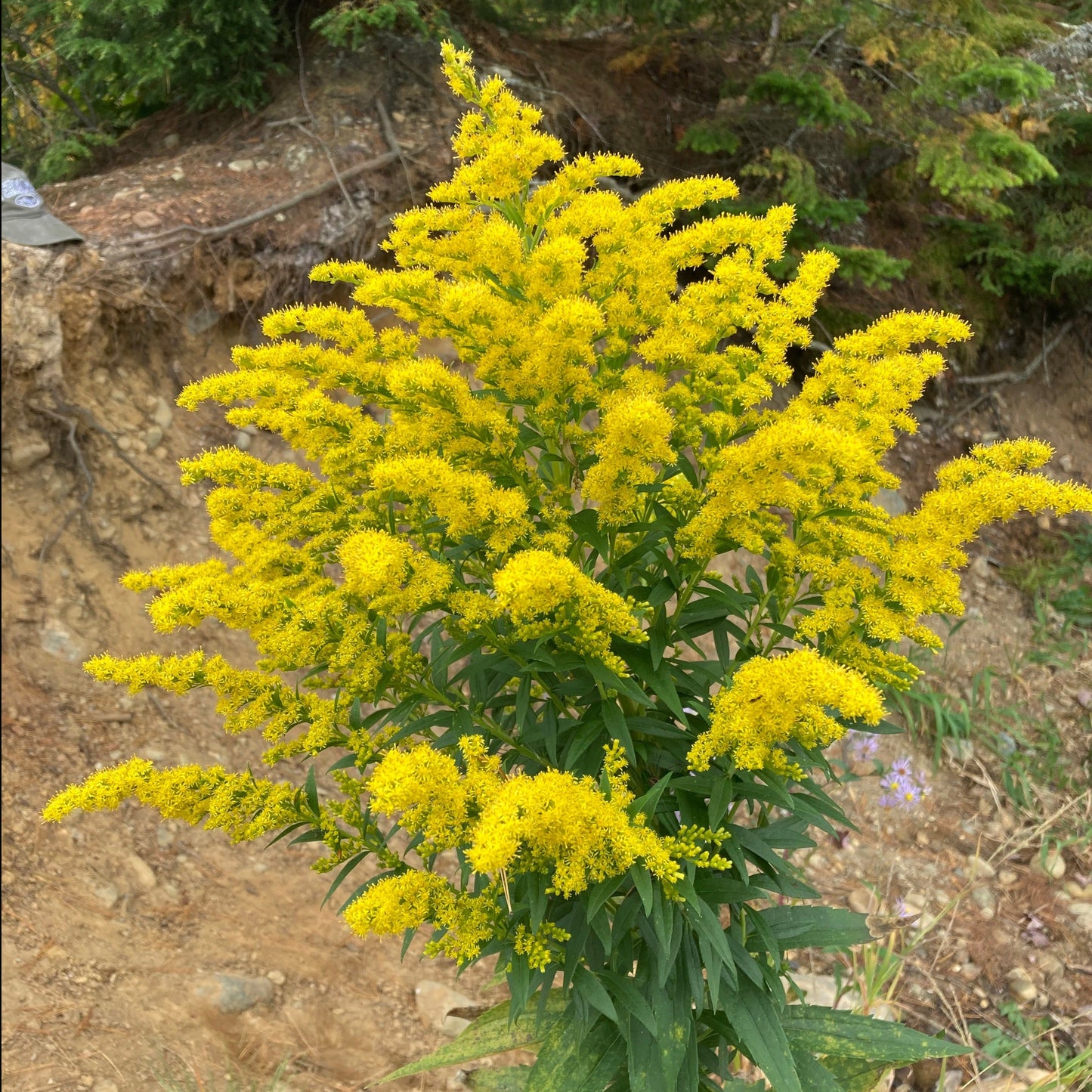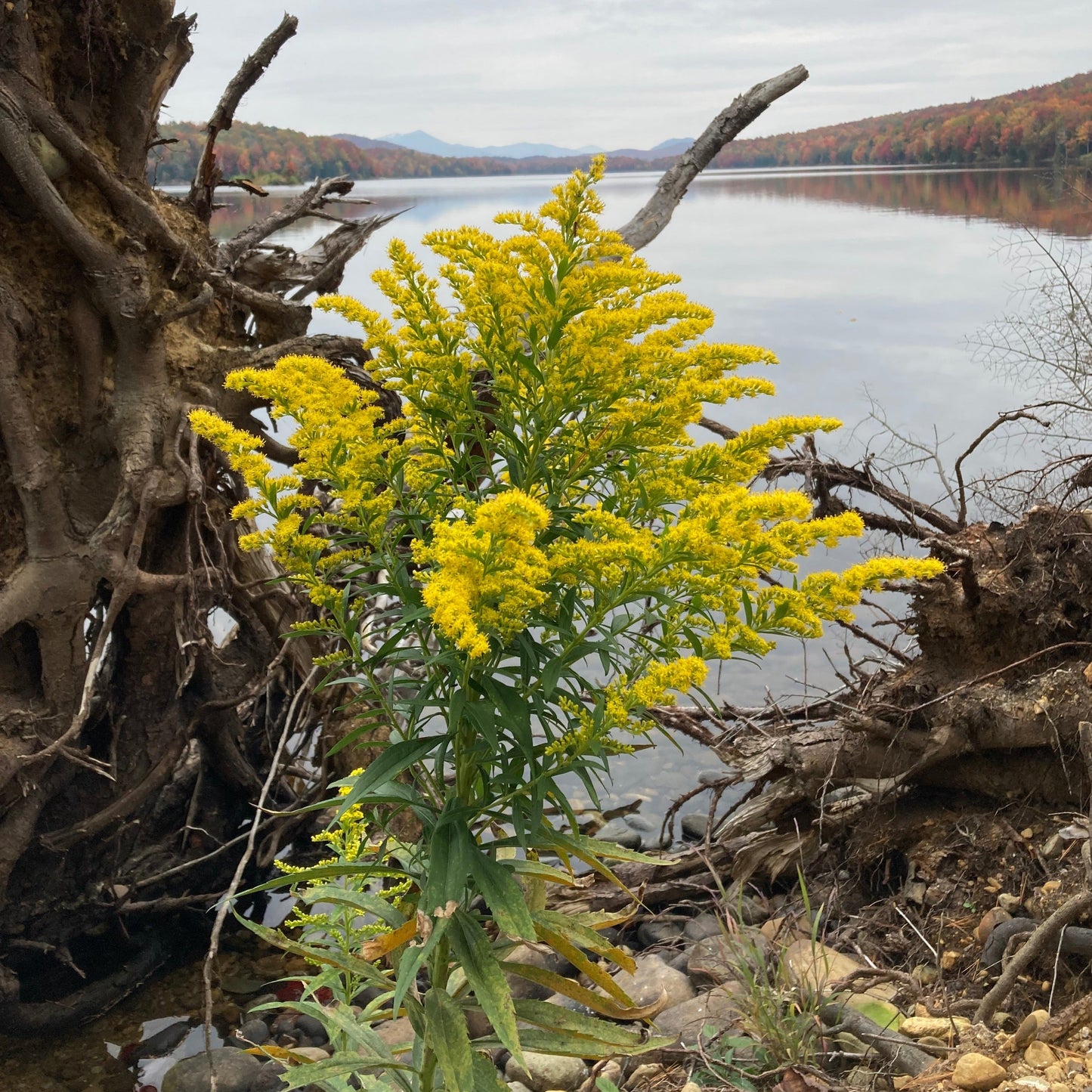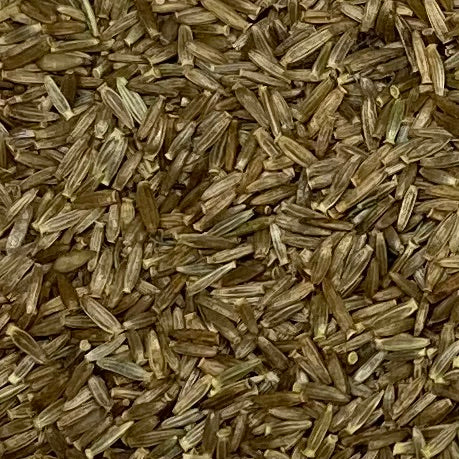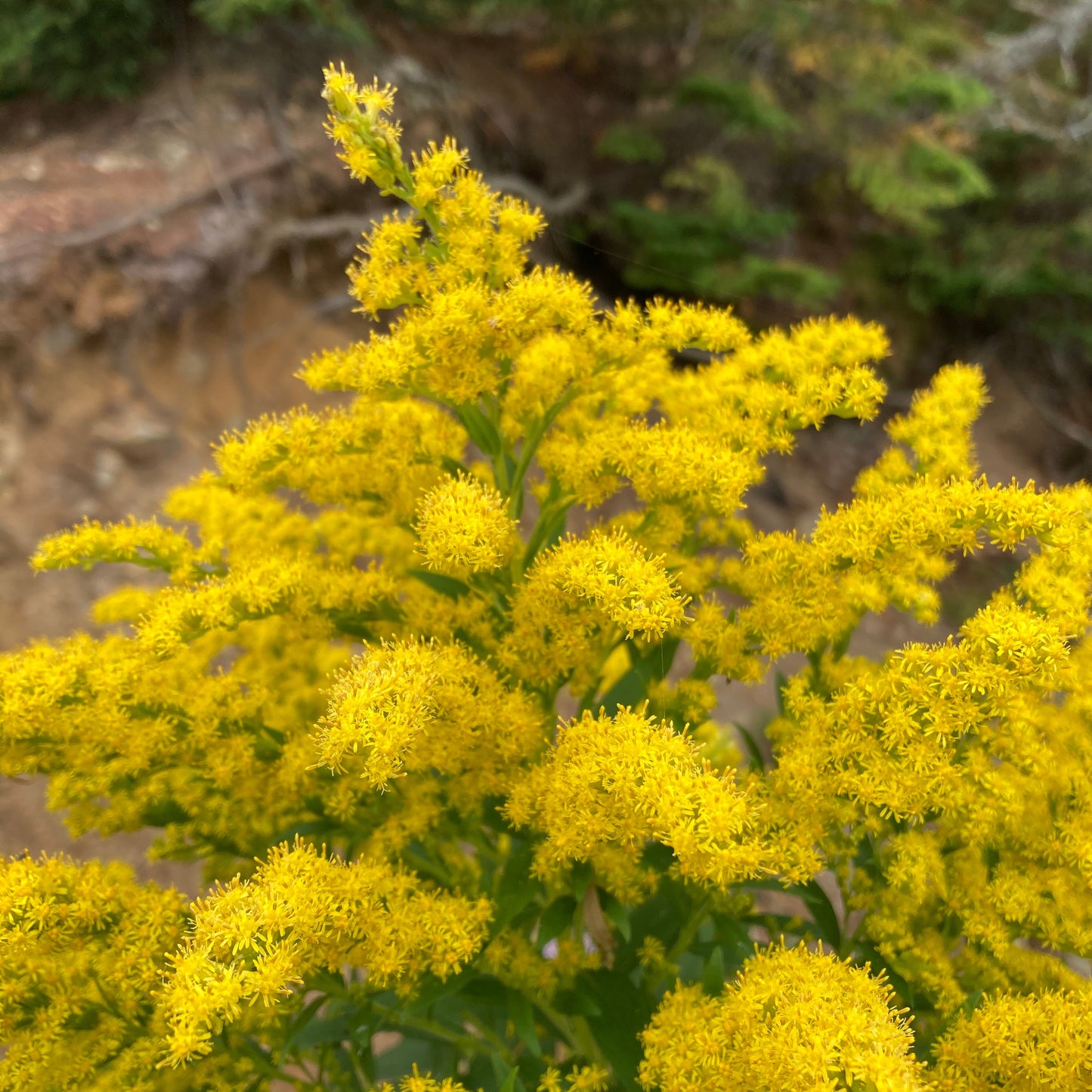Goldenrod, Sweet (Solidago odora)
List Price: $4.00
Couldn't load pickup availability
The bold brassiness of Sweet Goldenrod erupts in late summer, and signals the final hurrah of the season. This species, named for the lovely anise-like scent that wafts off of crushed leaves, is native to North America, and isn’t too fussy about where it grows. The scent alone makes them instantly identifiable against other Goldenrod species. Sweet Goldenrod is clump forming, and will readily self-seed into a cluster of stalks— know that it doesn’t grow in a tidy habit, and it’s best to give this plant some space to sprawl. This type of Goldenrod is more suited towards domestication than any other. With pollen dripping from the inflorescences of this plant, it is an important source of nectar for bees and butterflies, with there even being certain bees that exclusively feed on Goldenrod flowers. Since their bloom time is later than many other flowers so heavy with nectar, Solidago odora keeps a succession of food going for pollinators. The fall honey produced in many Northeastern states is made from Goldenrod nectar. Their seeds also provide late-season nutrition for birds. While Goldenrod is often blamed for fall allergies, this is a misconception, as its pollen is heavy and not carried by wind; typically the culprit of this issue is ragweed. In fact, there are some reported uses of this plant to combat allergies. Beautiful and fast-growing, these sunny plumes are wonderful in taking hold on a recently disturbed site, allowing for other forms of life to follow.
Sweet Goldenrod has long been known as a highly effective dye plant. As one might expect from the hues of its blossoms, this plant can create stunning shades of yellow, gold, and copper (it may also be processed for a more yellow-green tint). Indigo dye is often layered over fabrics stained with this plant for a green coloring. One achieves the best pigmented dye when the flowers are harvested at peak bloom, with plant-based fibers more suited towards highly potent results.
Solidago odora can be consumed in the form of a tea made from the leaves and flowers, and is even referred to as ‘Blue Mountain Tea.’ After the Boston Tea Party, colonists got their tisane fix with an herbal blend that featured Sweet Goldenrod. It became known as ‘Liberty Tea’ and was exported as far as to China. This plant produces a substance that can be turned into rubber, and was even experimented with in manufacturing car tires, until synthetic rubber was developed. Sweet Goldenrod also has a history of herbal use, topically applied in the form of poultices or salves, and consumed by infusion or straight as restorative for the throat, lungs, and nose. The Meskwaki tribe traditionally made a lotion for stings or wounds using Goldenrod’s blossom, while Delaware tribal people through New Jersey and Pennsylvania chewed the leaves to lessen fevers. Yet its more prominent uses are for helping sooth ailments of the throat and mouth. In addition to its use as a herb, Hopi and Navajo peoples traditionally used this plant to create a beautiful bright dye. With its licorice odor and striking yellow crest alone, Sweet Goldenrod is a wonderful plant to have around, without even a mention of its applications and benefits to the surrounding ecosystem.
